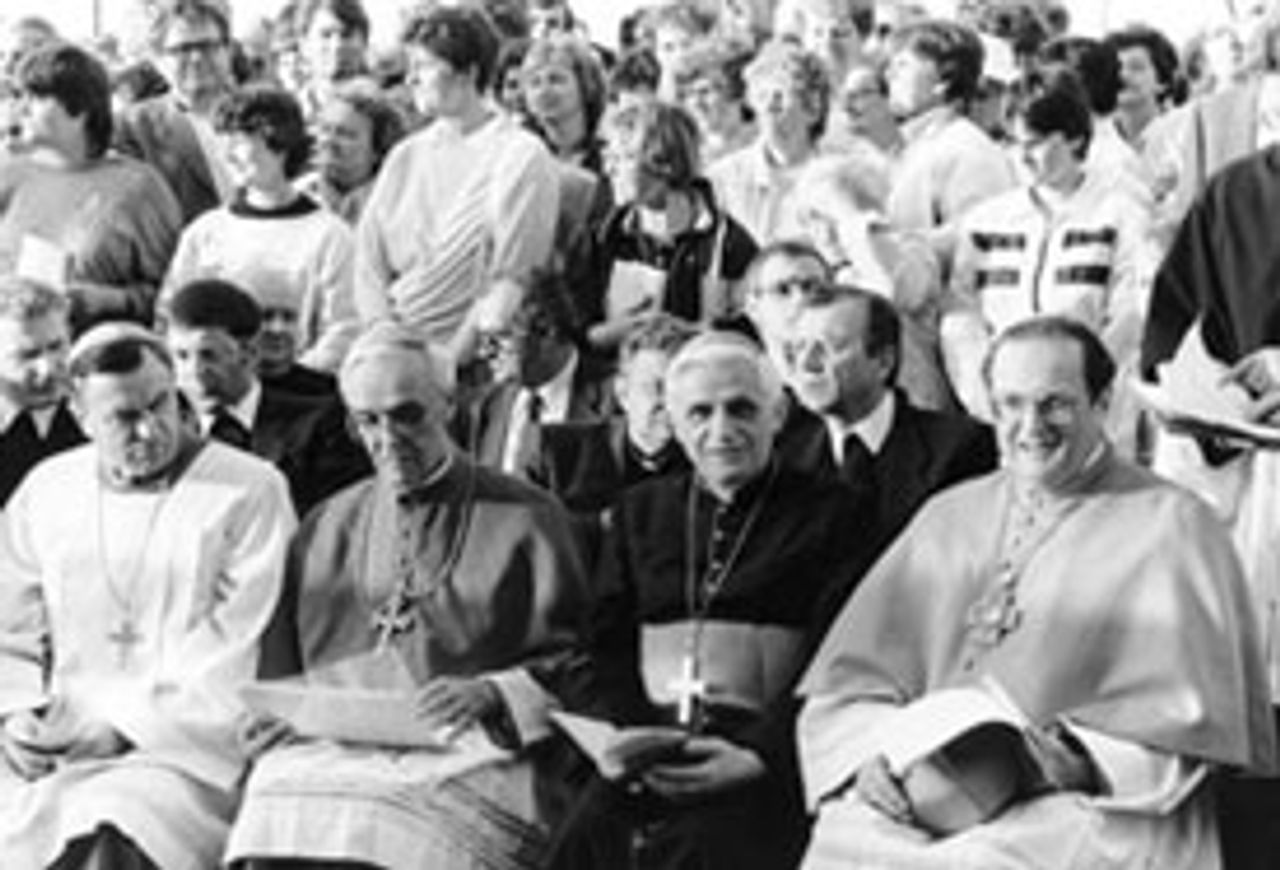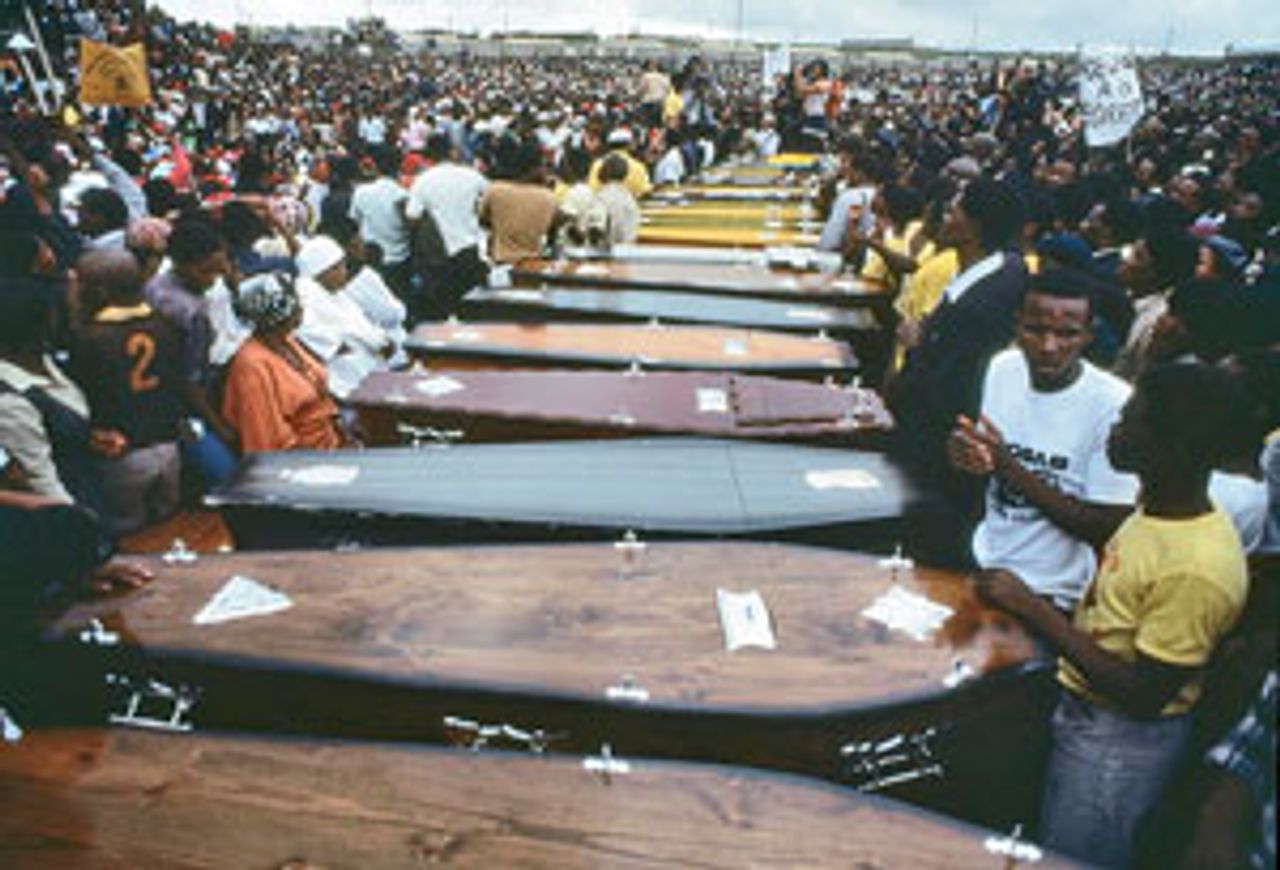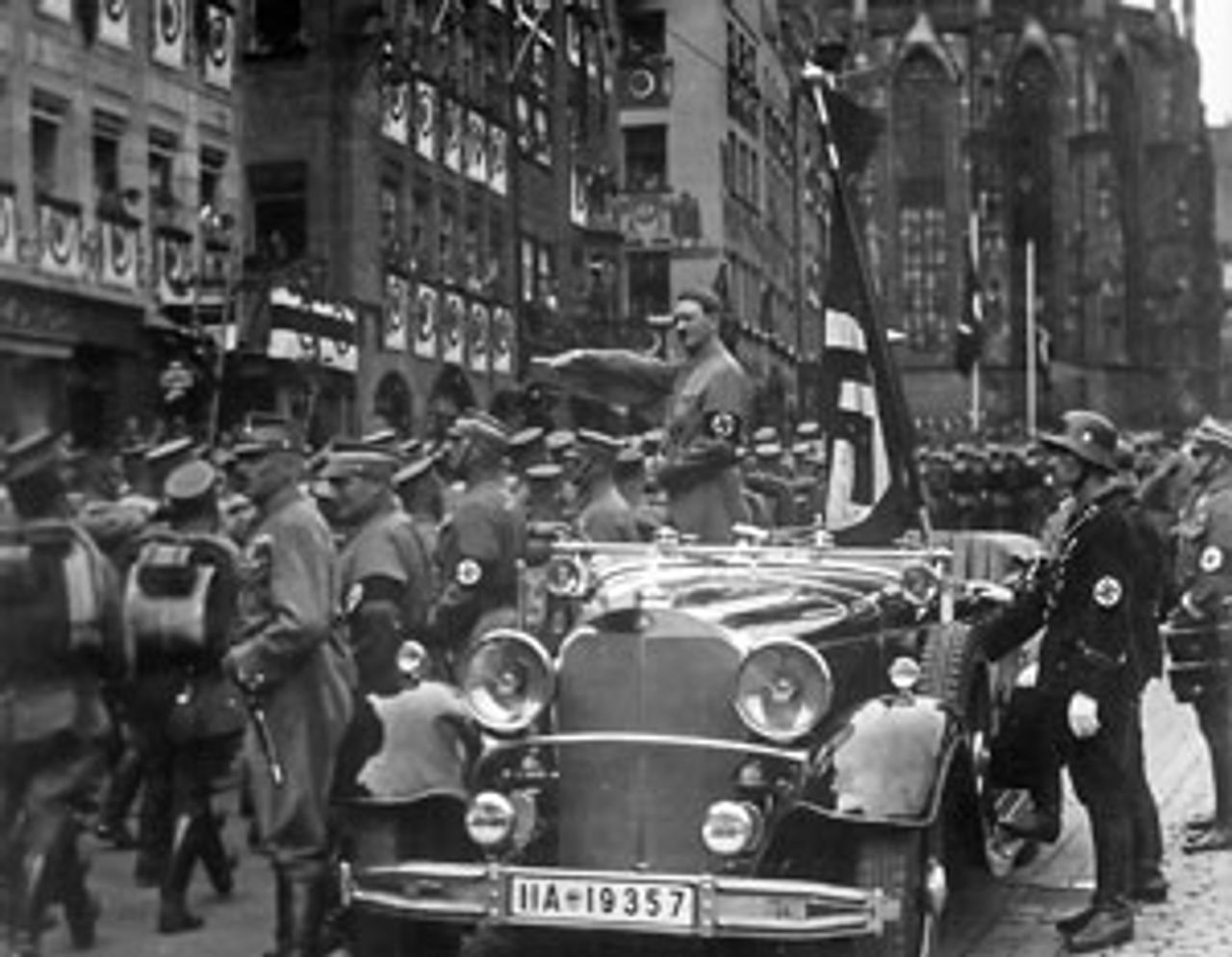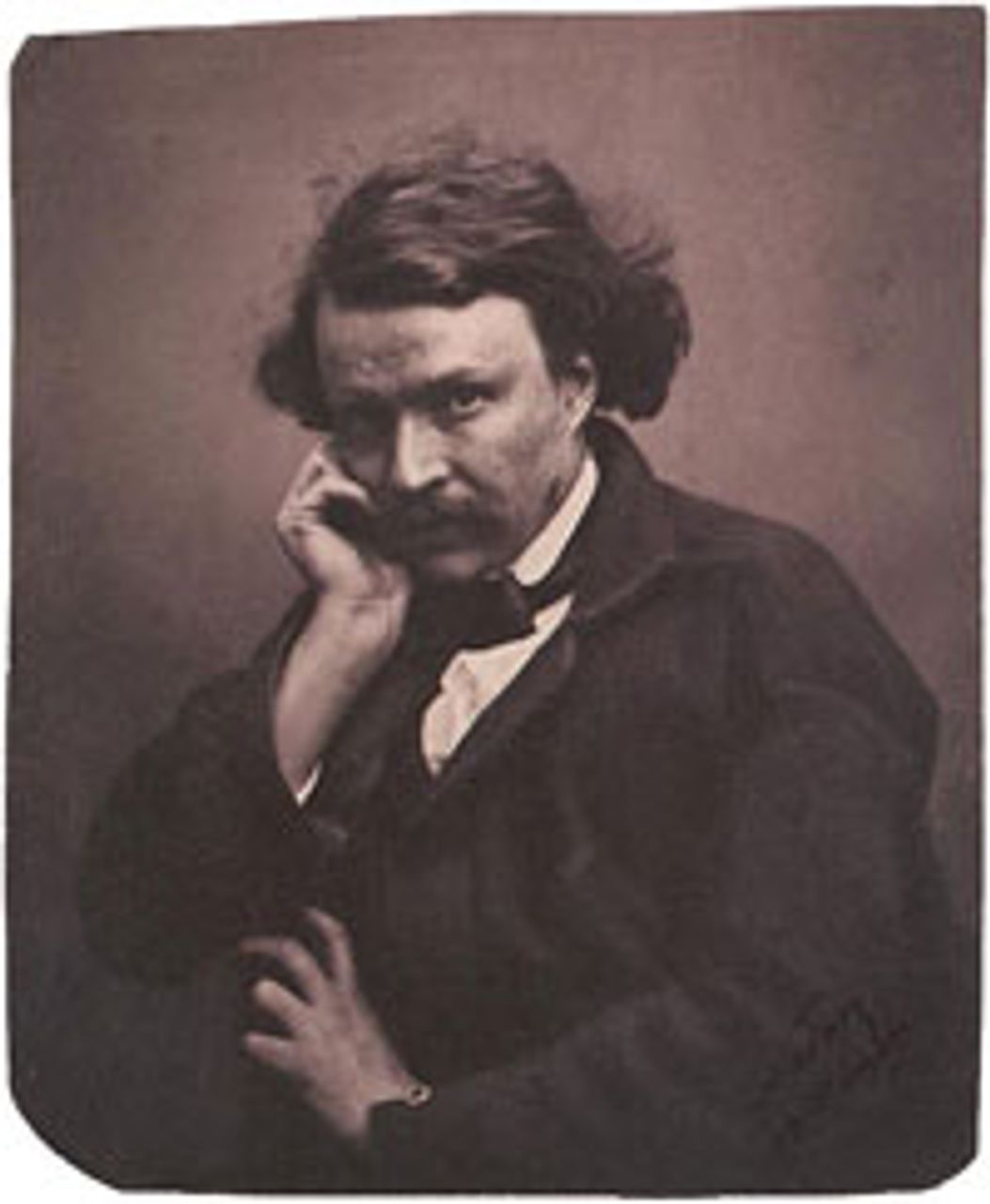This Week in History provides brief synopses of important historical events whose anniversaries fall this week.
25 Years Ago | 50 Years Ago | 75 Years Ago | 100 Years Ago
25 years ago: Vatican inquisition of “liberation theologians”
 Josef Cardinal Ratzinger in 1987, second from right
Josef Cardinal Ratzinger in 1987, second from rightThe Vatican intensified its inquisition against reformist elements in the church on March 21, 1985, when the Congregation for the Doctrine of the Faith—headed by Josef Cardinal Ratzinger—issuing a condemnation of the Brazilian Franciscan priest, Leondardo Boff.
The criticism from the Vatican was couched as a defense of church hierarchy, but it was part of a broader crackdown on the "liberation theology" movement comprised of reformist elements in the Latin American diocese. The persecution was inextricably bound up with the Vatican's defense of dictatorial regimes in Latin America. Liberation theology, with its emphasis on alleviating poverty, "sounds terribly like Marxism," according to an American prelate associated with Ratzinger.
In reality, liberation theology appropriated certain Marxist concepts, such as the class struggle, in order to head off working class revolution, which its adherents—including Fr. Jean-Bertrand Aristide in Haiti—explicitly rejected. The Vatican's attack on the liberation theologians signaled the church's determination, under Pope John Paul II, to stamp out any association with popular social movements.
Ratzinger's office, the Congregation for the Doctrine of the Faith, was the direct descendant of the Inquisition, established in 1542, which was ordered "to maintain and defend the integrity of the faith and to examine and proscribe errors and false doctrines." Among its many victims were the scientists Giordano Bruno, burned at the stake in 1600, and Galileo Galilei, imprisoned in 1633.
50 years ago: Sharpeville massacre in South Africa
 Coffins of victims of the Sharpeville massacre
Coffins of victims of the Sharpeville massacreSouth African police opened fire on a crowd 20,000 peaceful black protesters in Sharpeville, Gauteng province, killing at least 69 people, among them ten children. As many as 200 people were injured.
The protest in Sharpeville, 28 miles southwest of Johannesburg, was led by the Pan Africanist Congress, a rival to the African National Congress, and coincided with large protests across the country against the apartheid system's practice of "pass laws," which were increasingly used to thwart the struggles of black workers. A contemporary account from Time described the internal passport regime:
"The pass lists the African's name, birthplace, and tribal affiliation, contains his picture and serial number, has space for a receipt to prove that he has paid his taxes and to list his arrests, and unless it is signed each month by his employer, the African can be herded with the other unemployed into a native reservation. If an African travels from the countryside to the city, or just across the street for cigarettes, South Africa's ubiquitous, hard-fisted police check his pass. If he stands outside his front door without his pass, the police will not let him walk five feet to get it. He is hauled off to jail, without notice to his employer or family, and fined or imprisoned."
The killings provoked mass protests across South Africa, and compelled the government to declare a national state of emergency, with the arrest of thousands.
75 years ago: Hitler repudiates Treaty of Versailles
 Hitler saluting parade of soldiers in November, 1935
Hitler saluting parade of soldiers in November, 1935On March 16, 1935, German Chancellor Adolf Hitler released a statement rejecting the Treaty of Versailles and announcing the establishment of compulsory military service in Germany.
The Nazi leader’s remarks coincided with the passage of a law establishing the preliminary terms of German rearmament. The “law for the upbuilding of a defensive force” provided for the creation of a German army comprising “twelve corps commands and thirty-six divisions” to be “predicated on universal military service.” The law was passed just days after Hermann Göring announced publicly the creation of a German air force, also a violation of the Treaty of Versailles.
Hitler voiced his declaration in defensive terms, saying that Germany did not intend to “create any instrument for warlike attack” and that the military would be used “exclusively for defense and thereby for the maintenance of peace.”
In reality, the economic crisis of the Great Depression, bringing with it a massive contraction of international trade, meant that the interests of German capitalism would have to be defended on a war footing. To compete with the economies of the British Empire and especially the United States, Germany would not only have to restore its borders to their pre-war size, but expand them, securing new territory in Eastern Europe and Russia.
Hitler's actions sent reverberations in the capitals of the major powers. Britain almost immediately requested that its foreign minister, John Simon, be allowed to meet with Hitler for negotiations. London, Paris and Rome were said to be speaking on an hourly basis and a joint conference was quickly planned between the countries.
100 years ago: French photographer Nadar dies
 Félix Nadar, self portrait, ca. 1856-1858
Félix Nadar, self portrait, ca. 1856-1858Félix Nadar, a famous French photographer and caricaturist, died on March 21, 1910, at the age of 89.
Nadar's political cartoons, which appeared in Le Charivari, Revue comique, and Petit journal pour rire, were known for their biting wit, but it was his photography that earned him widespread acclaim. Nadar, born Gaspard-Felix Tournachon, was the first to attempt aerial photographs of France from his balloon Le Géant, which inspired Jules Verne's Five Weeks in a Balloon. He was also the first to use electrical lighting to capture images of Paris' catacombs.
His major achievement, however, was his catalogue of sensitive, almost psychological, photographic portraits, his years as a caricaturist giving him an a unique ability to discern character through facial features.
According to a contemporary, "all the outstanding figures of the era—literary, artistic, dramatic, political, intellectual—have filed through his studio." Among his subjects were Rossini, Liszt, Balzac, Zola, George Sand, Charles Baudelaire, Verne, Peter Kropotkin, Gustave Courbet, Sarah Bernhardt, and Victor Hugo. Nadar's photographic studio became a meeting place for the era's great artists, and served host to the first exhibition of Impressionist art in 1874.
In 1857, Nadar explained his artistic conception for the new field of photography: "The theory of photography can be taught in an hour; the first ideas of how to go about it in a day. What can't be taught... is the feeling for light—the artistic appreciation of effects produced by different...sources; it's the understanding of this or that effect following the lines of the features which required your artistic perception. What is taught even less, is the immediate understanding of your subject—it's this immediate contact which can put you in sympathy with the sitter, helps you to sum them up, follow their normal attitudes, their ideas, according to their personality, and enables you to make not just a chancy, dreary cardboard copy typical of the merest hack in the darkroom, but a likeness of the most intimate and happy kind."
